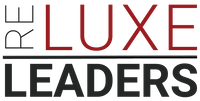3 Secrets to Conducting Effective One-on-Ones That Drive Real Results
Leading a high-performance real estate brokerage often means balancing complex operational demands while nurturing individual talent and planning for sustainable growth. Yet, one underutilized lever for transformation remains the disciplined one-on-one meeting. Executed with precision, these conversations can surface critical insights, reinforce loyalty, and keep your team aligned with organizational priorities.
Here, we distill lessons from hundreds of one-on-ones conducted by Chris Pollinger,Founder and Managing Partner of RE Luxe Leaders™, outlining a strategic framework tailored for seasoned brokerage leaders who value operational rigor and results over rhetoric.
Secret #1 – Start with Personal
Effective one-on-ones begin with genuine human connection. Ask your team members how they are doing personally and acknowledge the whole person behind the role. Especially for your top-tier associates, professional challenges often reflect personal circumstances. The leadership axiom holds true here: “People don’t care how much you know until they know how much you care.”
Track the personal details they share and circle back in future meetings to show sustained interest and build trust. This approach is more than empathy; it’s a strategic retention tactic grounded in emotional engagement. Decision-making, particularly around staying or leaving a brokerage, is made emotionally and rationalized logically afterward. Developing loyalty through authentic care is a competitive advantage that directly impacts retention and culture cohesion.
Secret #2 – Move to Professional
Once rapport is established, shift the conversation toward performance metrics and professional progress. Each team member should be tracking key indicators aligned to their highest-impact goals. Focus on one or two leading metrics that drive their contribution and the brokerage’s success.
If performance lags, delve into mindset and daily tactics. Assess their attitude and the specific actions they are taking or neglecting. This ensures accountability and a clear understanding of behavioral drivers behind the numbers. Keeping these discussions data-informed maintains clarity and objectivity.
Secret #3 – End with What’s Next
Conclude every one-on-one by defining clear next steps through targeted questions. The following five questions serve as a practical checklist to focus on actionable growth:
- What do you want to get better at?
- Can you identify a couple of actions that will impact that?
- What is one thing you can do in the next seven days that will influence that goal?
- How will you measure progress quantitatively?
- How can I support you in this?
By framing the conversation toward forward motion, you create accountability and ensure the meeting drives tangible outcomes.
Optimizing One-on-Ones by Role and Cadence
Strategically segment your team into groups and tailor one-on-one cadences accordingly:
- Administrative staff: Weekly one-on-ones with all direct reports maintain operational alignment and engagement.
- Sales team – top producers: Meeting monthly (or quarterly if supported by group mastermind coaching) frees leadership bandwidth while sustaining connection.
- Sales team – active producers: Bi-weekly or bi-monthly meetings depending on complementary group coaching schedules reinforce progress and troubleshooting.
- Sales team – new agents and underperformers: Weekly or bi-weekly cadence is critical for onboarding, skill development, and course correction.
Mastermind group coaching systems bring efficiency and consistency as your organization grows. For multi-office brokerages, personally running one or two mastermind groups with your top producers provides indispensable market intelligence and operational feedback.
Measuring Time Allocation in One-on-Ones
Initially, allocate approximately one-third of your one-on-one time to each area: personal connection, professional performance, and next steps. Over time, you may find that roughly 50% of the conversation addresses personal issues, 20% professional topics, and 30% focused on defining next steps.
This evolving distribution reflects deeper trust and more candid exchanges. When executed consistently and correctly, one-on-ones become an indispensable tool in scaling leadership impact, advancing individual growth, and enhancing collective team performance.
Further Reading





